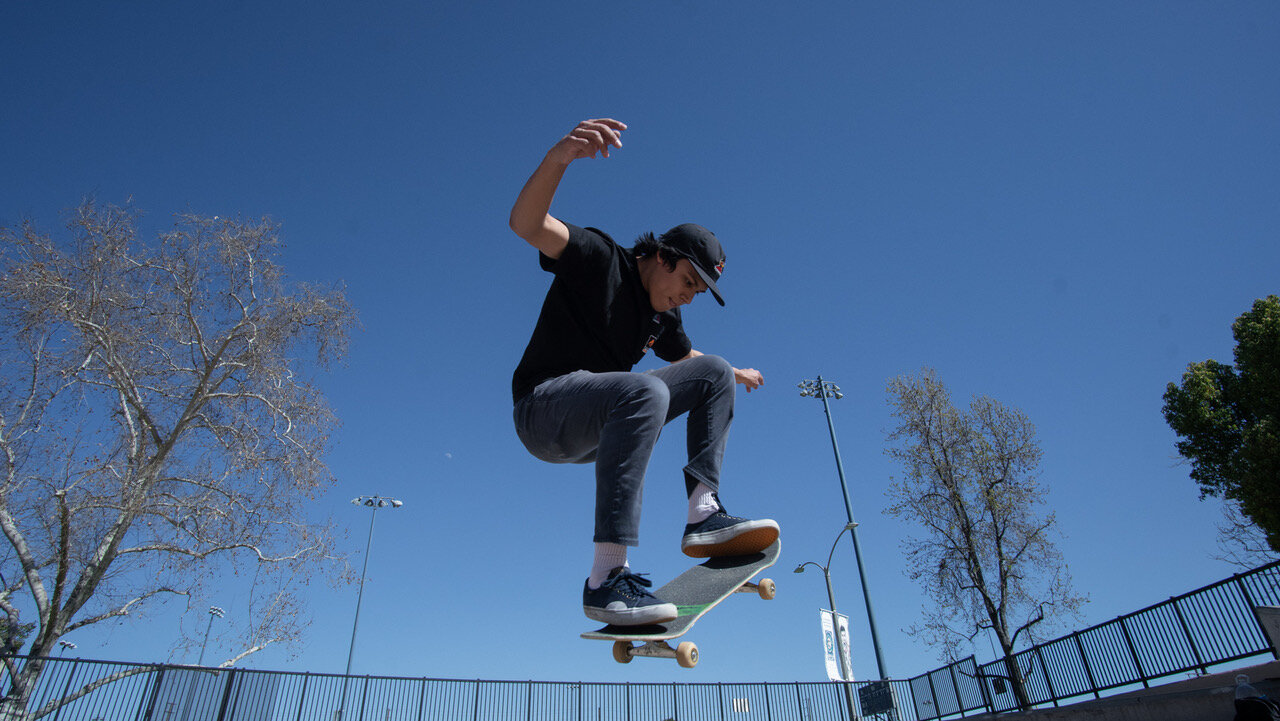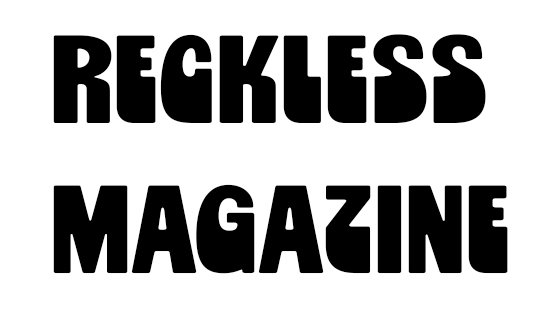Shred's Not Dead

Skaters Helping Skaters
Director of Photography Nicole Burleson shares the process behind the making of “Shred’s Not Dead’”, a documentary about how skateboarding brings people together.
Southern California and Phoenix, Arizona, USA
Tony Rangel at Azusa Skatepark
What is “Shred’s Not Dead” about?
The short film, “Shred’s Not Dead” is about how skateboarding brings people together from all different walks of life to share one passion and become a community for each other. This film highlights the skateboarding community and breaks the molds that society has placed on the skating community.
What inspired you to make this ? Why is it important to make?
In November of 2018, I was assigned the task of filming a cinematography final. Although Alexis and I didn’t know a lot about skateboarding, we both turned to each other in class and were like, “Let’s make a skateboarding film.” Before this film, I had never skated before. But I do believe that skateboarding inspires me because my Dad used to skate vert in the 80s. I had always thought that skateboarding was unique because you can be so creative with it. When we started shooting, we had no idea what the film was going to be about, we just knew we needed to shoot skateboarding. But that’s how documentaries are made, you find the message as you film it. We realized that this film was important to create because it shows the true nature of the skateboarding community. The skateboarding community certainly gets a lot of backlash from society. But little do they know that the skateboarding community is full of creative people who help each other and push each other to grow. It’s “Skater’s helping skaters.”
Who was involved making the video ? How long did it take? What was the process?
Shred’s Not Dead started off as a cinematography final but it soon became something much bigger. Originally, it was a final for Alexis Shirley and I. Kait Anderson directed the film, Alexis Shirley produced it, and I was the Director of Photography. We started filming in November of 2018. A couple of people that helped shoot the film were Emma Brown, Chetco Timmins, Olivia Tan, Cruz Herrea and Jacob Harper. But then, I had called a couple of my friends in Arizona who skate and they wanted to be in the film as well. The final was due before I was able to go and film in Arizona, so we made a really short cut of the doc and turned it in. But I knew that it had the potential to be something bigger and better then what we turned in. I went and filmed the skaters in Arizona in December of 2018 and then continued to film for the next year.
During 2019, I kept filming in Santa Ana and in Azusa with local skaters. Since, I am a Director of Photography and there wasn’t really anyone to tell me to stop filming, I just kept shooting. Through this, I got better at filming skateboarding and was able to film the skaters I had been filming with more fluidly as I learned their style. During this year of filming, I had tried to edit the film multiple times but failed to complete it. In 2020, I became good friends with Ben Folgert. He is a phenomenal editor and a great sound mixer. I told him about the skate documentary and asked him if he would want to edit it. He said that he would edit it and after six months of editing, Shred’s Not Dead was finally done.
Where did you film?
We shot Shred’s Not Dead in Arizona as well as in California. A lot of the filming in Arizona took place at Goodyear skatepark. We did spend a couple hours shooting with Jaws at Paradise Valley Skatepark and I spent a day shooting Spencer Albright at Rio Vista Skatepark. In California we mainly shot in Santa Ana at a couple parks and a lot of street spots. Nate and Aaron took me to the famous Bricktown spot in Santa Ana. We shot there for a couple hours and then hit up another street spot. I shot Tony Rangell at some street spots in Whittier and Azusa. A couple of the interviews were filmed at a local skate shop in Fullerton called Programme Skate and Sound. A lot of the filming was done throughout the year as we skated around and found new street spots. But we started filming in Santa Ana.
Who are the people you interviewed? How did you get in touch with them?
Aaron Salinas was one of the first skaters I interviewed and I met him through a friend. When we went to film Aaron, he introduced us to Nathan Scott. Then through Nate, I met Alanis Marquez. I knew Tony Rangel from college and asked him if he would want to be in the film and he said he was down. As for all the skaters from Arizona, I met a lot of them through my friend Elijah Krueger. I asked him if he knew anyone else who would like to be in the documentary and when I got to the Goodyear skatepark there was like 30 skaters waiting to be filmed. I knew Spencer Albright from high school and I was stoked that he wanted to be in the film, he is a really good skater. One of my classmates from college asked me if I wanted her cousin’s number because he was a skater and she knew that I was making a skateboarding documentary. I said yes, and then I found out that the skater she was talking about happened to be Aaron “Jaws” Homoki. I asked him if he would like to be in the documentary and he said he would, the only problem was I was currently in California and he was in Arizona. Luckily, I go to school out in California, but my family lives in Arizona. On my winter break, I was able to come out and film Aaron as well as all the Arizona skaters in the film. I am truly grateful to have met a lot of amazing skaters as well as gained some lasting relationships throughout the filming of this documentary.
Any struggles in making this? Best things ?
I started filming this project in 2018 and I learned a lot. I learned that shooting skating is not simple and it takes time and practice. I had an interview lined up after shooting some street skating and the street skating was taking longer than I had thought due to the skater trying to nail a trick. I tried to rush them so we could get to the interview on time. But they were getting frustrated and told me, “Skating takes time, you can’t rush a trick.” After that shoot, I was patient with skaters and didn’t have anything lined up after a shoot. I would take a whole day with a skater and give them lots of time and not make them feel rushed in order that they could nail the trick on their own time. A huge lesson that I learned during the filming of Shred’s Not Dead is that good audio matters. As I am a visual person, I often just focus on the visuals and not care about the quality of the audio. But this was a huge mistake on my part. We sadly had to cut some of the interviews because the audio wasn’t able to be saved in post.
A lot of great things have come out of the making of this film. I have made friendships that I otherwise never would have had if we never shot this film. Along with meeting some incredible people, this film has inspired a lot of people to take up skateboarding. I know of at least six people, myself included, who have picked up a board and started to learn to shred. One of my favorite days of filming, was at Ponderosa Skatepark with Aaron and Nate. We got a lot of great footage at Ponderosa and then we went and shot the Hill of Death. There was quite a lot of us filming, we just gave everyone a different camera and shot. That was the first time I hung out with Nate and Aaron. Looking back on it, I am very grateful for that day because I was with all of my friends from college and we were filming two of my now good friends.
Anything else you would like to add?
Shred is definitely NOT dead, pick up your board and keep shredding.





